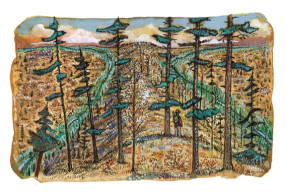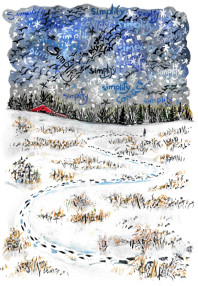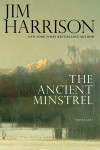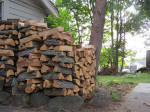A few weeks ago I got “schooled” in social media. The occasion was my first blog post for Mother Earth News, “A Murmuration of Starlings”, about the swirling, shifting, switching formations of starlings in large flocks.
My point was about looking at the glass half-full: That starlings are invasive species and a scourge, yet in many ways they are beautiful. I expected some push-back, but I was unprepared for the huge and varied reaction the article received on the Facebook page of Mother Earth News. I was astonished and pleased that it received thousands (and thousands and thousands) of shares and likes. And then I began reading some of the hundreds of comments and couldn’t stop laughing. They were as various as nature itself:
The first hundred or so were of this sort:
“Wow.” “Awesome.” “Beautiful.” Breathtaking!!!! “Unbelievable!” “Mozart kept starlings—he said they gave him melodies.”
Then came:
“As bad as cane toads.” “What a flocking load of rubbish.” “This an invasive species. I have been shooting all the starlings I see.” “Bad idea to bring them here. I say let’s send them all back to Europe!” “Reading the comments here, I thought for a moment this was about immigrated Europeans and Native Americans, LOL!” “Starlings are flying rats.” “Kinda like the morning doves…just sit in the feeder and crap and ‘coo’, and ‘coo’ and crap, ALL the time.” “Starlings are a scourge on the continent.“ “They are parasitic, laying their eggs in other birds nests! Nasty buggers!!” “Those dad-burn mother flockers….”
Then there were reactions to the photo I selected, which had looked fine until it was posted:
“Somebody really messed with the filter to get it to look like that. Usually they look more like a dirty oil slick.” “Breathtaking photo.” “Photoshopping a nasty invasive species doesn’t make it great!” “This is not the true color. They’re a dingy black brown color with a minuscule touch of green.” “Their iridescent colorings are amazing!”
And then (of course) there were the irrelevant and absurd:
“Hey girlfriend. Miss you!” “Not a humming bird but hello Alexa.” “Can you do your hair like this?” “I must attempt to draw, once I get my flat tidy.” “I wonder if it’s a high roller or low roller….claireese?” “The local church has murmurations daily. Its amazing to watch.”
What did people say about the article I put so much work into researching and writing?
“Didn’t read the article; but the photograph is stunning.” “Pretty cool. There is a group in England that is collecting videos of starling murmurations and attempting to decipher the mathematics of their flights.” “Bloody starlings!!! So majestic in migration…was lucky enough to see the “smoky haze” off the coast of Brigatine NJ last fall.” Finally: “This article was an education!”
I thought that one result of this minor sensation would be that thousands of people would “flock” to my website to find out about the book from which the article was adapted. But, no. My son Nick who is an expert on social media (he co-owns the web design and marketing firm Binary Trail) laughed and said “ It doesn’t work that way, Dad.” And then he set out to school me, too.
(“Murmurations of Starlings” is adapted from A Walk in the Animal Kingdom. Learn more about it here.)










4 Replies